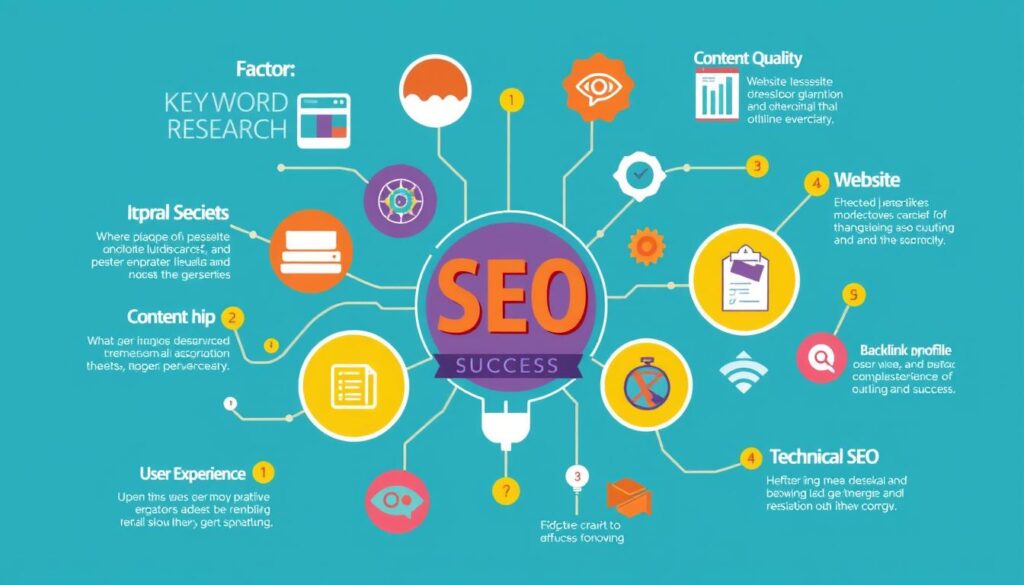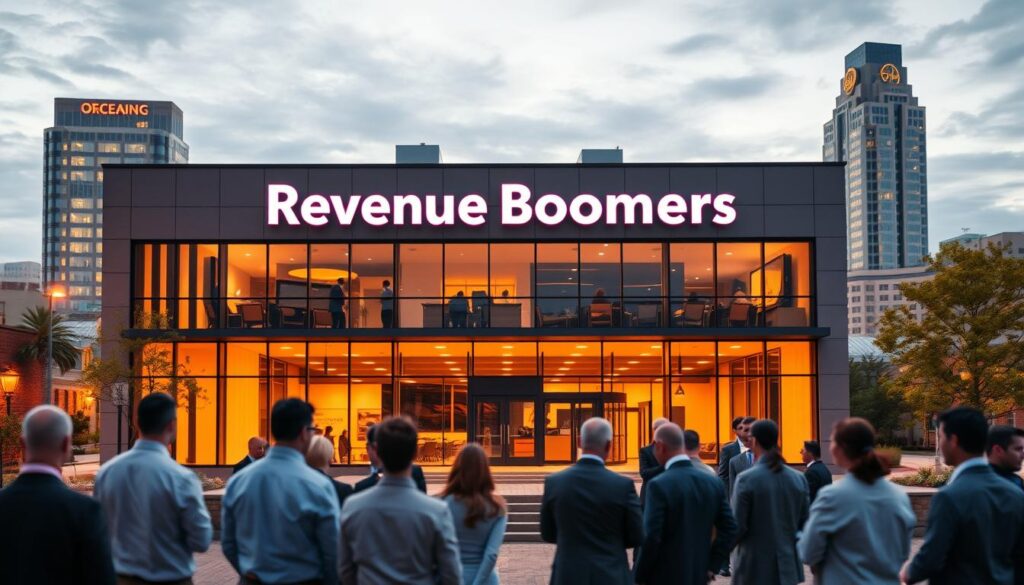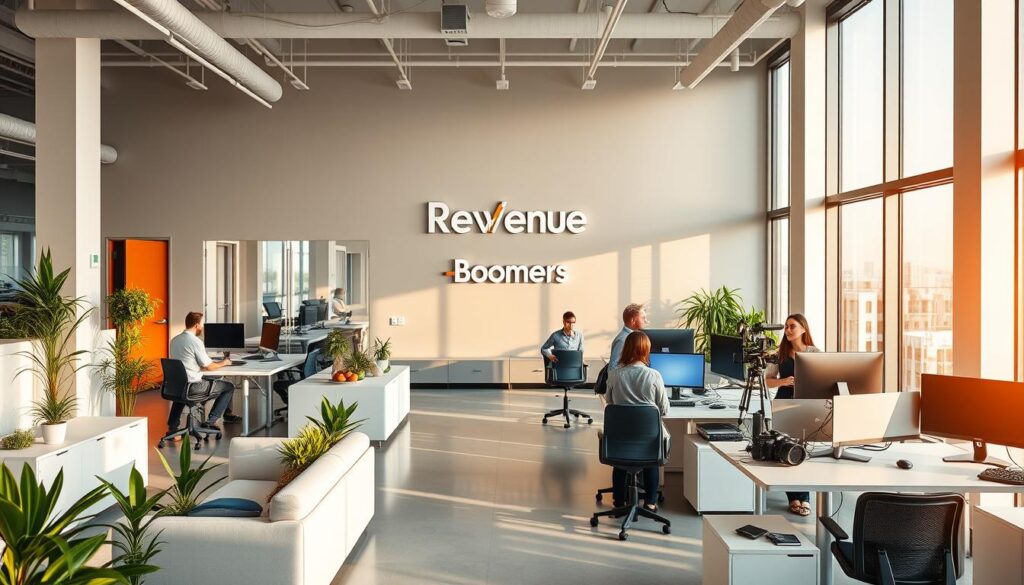Ever wondered why some brands are always at the top of search results? The secret might be in SEO success rates. SEO is key to getting noticed online and drawing in more visitors. With 68% of online searches starting with a search engine, knowing SEO is crucial for businesses to succeed.
Studies show that regular SEO efforts lead to more quality leads and customer interaction. For example, SEO can bring in over 1,000% more visitors than social media. Google, being the top search engine, handles over 63% of web traffic in the U.S. This makes tracking SEO success very important for any online strategy.
Knowing what makes SEO successful can help businesses improve their online presence. Understanding metrics like click-through rates and backlinks can give valuable insights. This knowledge helps in achieving real results through SEO.
Key Takeaways
- 68% of online experiences begin with a search engine.
- SEO drives over 1,000% more traffic than organic social media.
- Businesses utilizing SEO see an increase in quality leads and customer engagement.
- Google accounts for over 63% of all web traffic referrals in the U.S.
- Measuring key metrics is essential for understanding SEO success.
Understanding SEO and Its Importance
Search Engine Optimization (SEO) is key to making a website more visible online. It helps connect people with businesses that offer what they need. In the U.S., 63.41% of web traffic comes from Google. Good SEO builds trust and awareness of a brand.
Using SEO strategies like keyword optimization and designing websites for users can help a lot. These efforts not only bring more visitors but also increase leads and sales. Organic traffic, which comes from SEO, is often high-quality and more likely to convert.
Understanding market trends and what people search for is crucial for SEO success. Tailoring messages to specific groups can boost SEO rankings. Metrics like Largest Contentful Paint and Cumulative Layout Shift are important for user experience and rankings.
Adding SEO to marketing plans can boost existing efforts. Organic results get more clicks than paid ads. Analyzing traffic and using keyword research are key for staying visible online. For more info, check out this guide on SEO significance.
Defining SEO Success Rate
The SEO success rate is measured in several ways. It looks at organic traffic, lead generation, and conversion rates. By tracking keyword rankings and organic traffic growth, businesses can see how well they’re doing. For example, SEO leads have a 14.6% close rate, which is much higher than other channels.
It’s important to watch the right metrics to understand SEO outcomes well. Here are some key metrics to look at when checking SEO performance:
| Metric | Description | Importance |
|---|---|---|
| Organic Traffic | The total number of visitors arriving via search engines. | Indicates overall SEO performance and visibility. |
| Keyword Rankings | Positions of chosen keywords in search engine results. | Essential for understanding website visibility. |
| Conversion Rate | The percentage of visitors completing desired actions. | Measures the real impact of SEO on revenue generation. |
| Bounce Rate | The percentage of visitors leaving without further interaction. | Reflects user engagement and satisfaction. |
| Click-Through Rate (CTR) | The ratio of clicks to impressions on SERPs. | Indicates the effectiveness of page optimization. |
For deeper insights, use tools like Google Analytics and search console. These tools help track organic traffic and performance. By analyzing this data, businesses can improve their strategies and grow more effectively.

What is the Success Rate of SEO?
SEO success is shown through many statistics. These numbers help businesses understand its value in digital marketing. Knowing these facts helps make better online decisions.
Statistics on Organic Traffic
Organic search is the top source of website traffic. It shows how crucial it is to have well-optimized content. Google, with over 91% of the search market, is key in digital marketing.
Pages with more backlinks rank higher, leading to better SEO. The first organic search result gets a 39.8% click-through rate. About 68.7% of clicks go to the top three results. These organic traffic statistics highlight the need for strong SEO strategies.
Comparative Analysis with Other Marketing Strategies
SEO outperforms other marketing in lead and traffic generation. Organic strategies get 1000% more traffic than social media. Also, 49% of marketers see the highest ROI in organic search.
With 95% of search traffic on the first page, effective SEO offers big benefits. This makes SEO a crucial investment for businesses.
| Metric | Value |
|---|---|
| Percentage of clicks from organic search | 45.1% |
| Click-through rate of the first organic result | 39.8% |
| Share of clicks for top three organic results | 68.7% |
| Search engine market share of Google | 91% |
| Percentage of users accessing the first page of results only | 75% |
Key Metrics for Measuring SEO Success
Measuring SEO success means looking at several key metrics. Important ones include organic traffic levels, keyword rankings, click-through rates, and conversion rates. Tools like Google Search Console (GSC) and Google Analytics 4 (GA4) help track these results for free.
In Google Search Console, you can check several SEO metrics to see how your site is doing. Key metrics include:
- Organic Impressions: Shows how often your site appears in search results.
- Organic Clicks: Counts how many times people click on your site in search results.
- Click-Through Rate (CTR): A ratio of clicks to impressions, usually 2% to 3% for education sites.
- Keyword Ranking: Tells you where your content ranks in search results, affecting visibility.
- Branded vs. Non-Branded Traffic: Helps focus on traffic from your brand or other keywords.
Google Analytics 4 gives more insights into user behavior. It tracks organic sessions and organic users, which are key for understanding engagement. These metrics help businesses improve their sites to meet user needs better.
Looking at the 10 SEO metrics below can give you a lot of insight:
| SEO Metric | Description |
|---|---|
| Organic Traffic | Non-paid clicks from search engines. |
| Keyword Rankings | Where your site ranks for specific keywords. |
| Search Visibility | Percentage of keyword clicks that land on your site. |
| Traffic Value | What organic clicks would be worth if they were paid ads. |
| Conversions | Important actions users take on your site. |
| Referring Domains | Websites linking back to yours, boosting organic reach. |
| Indexed Pages | Pages indexed by search engines for your domain. |
| Index Coverage Errors | Issues stopping certain pages from being indexed. |
| Core Web Vitals | Technical metrics on website speed and user experience. |
| Session Duration | Average time users spend on your site. |
By tracking these SEO metrics well, businesses can learn a lot about their SEO. This knowledge helps make better strategies and boosts success.
The Role of Click-Through Rates in SEO Performance
Click-through rates (CTR) are key to SEO success. Knowing how rankings impact CTR helps us see what works. Sites on the first page get much more attention than those on later pages.
First Page vs. Second Page Results
CTR stats are eye-opening. The top Google result gets about 27.6% of clicks. But, moving to the second page drops that number to under 1%. This shows how crucial it is to rank higher to get more clicks.
| Position on SERP | Average CTR |
|---|---|
| First Result | 27.6% |
| Second Result | 12.5% |
| Third Result | 9.5% |
| Fourth Result | 5.0% |
| Page Two Results | Less than 1% |
Implications of Zero-Click Searches
Zero-click searches are now 61.5% of desktop searches. Users often find what they need without visiting a site. This changes how we measure SEO success, as low CTRs can mean answers are found in the search results.
To succeed, businesses need to adapt. Improving metadata, title tags, and snippets can help. By understanding both high and low CTRs, companies can improve their SEO and meet user needs better.

SEO Effectiveness: Factors That Influence Success
Many things affect a website’s SEO effectiveness. Content quality is key for keeping users interested and on the site. Using keywords wisely is also important, with the right amount being between 1 to 3%.
Mobile optimization is now crucial, as 60% of searches happen on mobile devices. A website that works well on all devices is essential for good SEO. This is especially true for industries where mobile use is high.

Backlinks are also important for SEO effectiveness. Links from trusted sites like .edu and .gov can help a site’s credibility and ranking. Sites without strong backlinks often find it hard to be seen by search engines.
Google looks at over 200 things when ranking sites. Keeping up with these changes is vital. Using structured data can help a site be found more easily, especially with the rise of voice search.
User engagement is also key. Content that keeps users interested, like videos, can increase interaction by 80%. Dealing with spam and making sure content is unique are also important for a good SEO strategy.
Understanding and using these factors influencing SEO is crucial for success. Businesses aiming to grow must focus on these SEO elements.
The Impact of Backlinks on SEO Outcomes
Backlinks are key to a good SEO strategy. They help websites rank better and get more visitors. Knowing how backlinks work lets businesses use them to their advantage.
Correlation Between Backlinks and Rankings
Studies show that more backlinks often mean better search rankings. About 92.3% of top sites have backlinks. But it’s not just about how many you have.
Having a few high-quality backlinks is more valuable than many low-quality ones. Links from trusted sites make your site look better. This is crucial for SEO success.
Quality vs. Quantity of Backlinks
It’s better to have a few quality backlinks than many low-quality ones. Links from good sites matter more to Google. Using the right keywords in your links can also help.
Using different sites for your links, like link roundups, can be smart. Tools like Ahrefs and Semrush help check your backlinks. Knowing how backlinks impact SEO can lead to better online results.
Current Trends Affecting SEO Performance
For any business wanting to boost its online presence, knowing the latest SEO trends is key. Voice search is becoming more popular, with about 50% of Americans using it every day. This means businesses need to make their content easy to understand when spoken, unlike text searches.
Visual search is also on the rise, with Google Lens seeing 10 billion searches monthly. This is a big jump from 3 billion in 2021. YouTube is now the second most used search engine, showing how important video content is for digital marketing.
About 53% of all website traffic comes from organic search, making it a top source of visitors. SEO leads are effective, with a close rate of 14.6%. This shows the quality of traffic SEO can attract. Also, 35.1% of marketers spend a lot on SEO, seeing it as a key part of their marketing plan.
AI is changing how search algorithms work, so companies must use AI tools wisely. But they also need to keep human creativity in content. Keeping up with SEO trends and adjusting strategies can greatly improve a brand’s online performance. Original content and personal experiences are still crucial, as AI can’t replace them. For more information, visit this link.
Addressing SEO Challenges for Better Results
Many organizations face big SEO challenges that block their online growth. Issues like not having enough resources and bad strategies hold them back. Knowing these problems helps make better choices and improve SEO plans.
Lack of Resources and Strategy Issues
Slow websites can cost businesses over $2.6 billion a year. With mobile use on the rise, having a site that works on phones is key. Companies often miss tracking their SEO progress, leading to missed chances for growth.
Quality content is still key. Bad articles can turn people off and hurt sales. Making sure your site is easy to use and adding the right keywords can help a lot.
Keeping up with search engine changes is hard. Staying updated helps improve your site and tackle SEO hurdles. Investing in learning and using professional services can help create effective plans for digital marketing.
Conclusion
SEO success goes beyond just making your site more visible. It’s about using the right metrics and strategies to bring in more traffic and sales. A good SEO summary shows that 68% of online activities start with a search engine. This makes it key for businesses to focus on SEO.
Companies that invest in SEO can see big growth. For example, 73% of clicks go to organic search results. This shows how important a strong organic search strategy is.
The SEO industry is expected to grow to $129.6 billion by 2030. This shows businesses see the value in SEO. In fact, 47% of marketers plan to spend more on SEO in 2023 than they did last year.
To make the most of this, companies need to create high-quality content and build backlinks. These are key strategies for 57% of marketers. They believe quality is key to beating the competition.
In today’s fast-changing digital world, it’s crucial to understand challenges and keep up with algorithm changes. By facing these challenges and staying current, businesses can make the most of SEO. This can turn visitors into loyal customers and help them stand out online.
Having a well-rounded SEO strategy is not just about getting more traffic. It also helps improve your brand’s reputation and profits.






